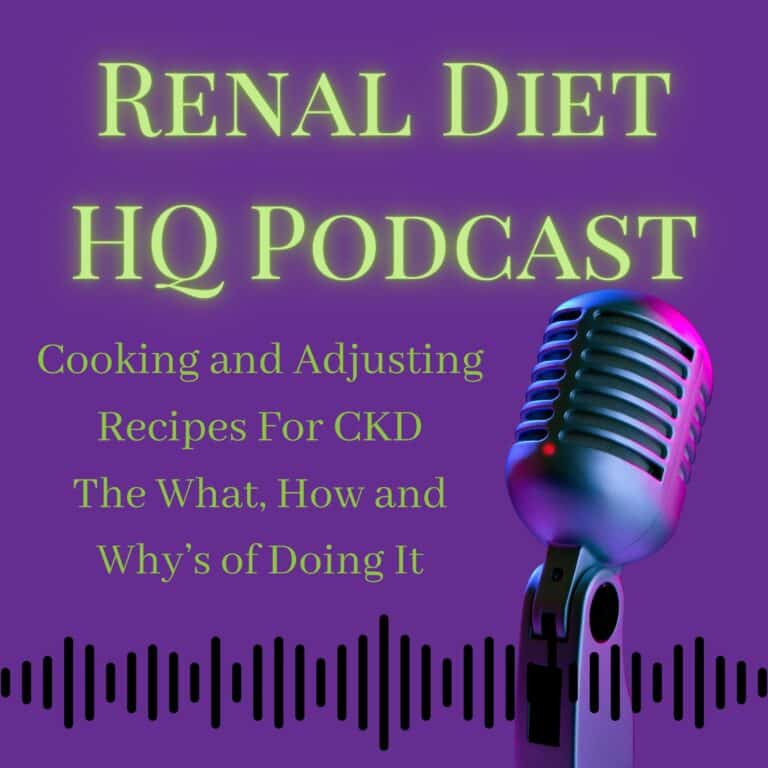Are There Any Special Kitchen Utensils Or Techniques For People With CKD Part 2- Podcast
Podcast: Play in new window | Download

In our journey to explore the nuances of cooking for individuals with kidney disease, we're back with Part 2 of essential utensils and techniques. If you missed Part 1, don't worry – we're here to guide you through the kitchen essentials that make preparing kidney-friendly meals a breeze.
For More Recipes and Ideas --->> Get Your Free Meals and Recipes That Are Perfect for Pre-Dialysis Diets, Pre-Dialysis with Diabetes, or Dialysis Diets.
Non-Stick Pans (Number 7):
When it comes to cooking for kidney health, non-stick pans take center stage at number seven on our list. These versatile kitchen companions allow for cooking with minimal oil or fat, particularly handy when preparing proteins like chicken or fish. Preheating the pan before adding your meat reduces stickiness, minimizing the need for additional fats while achieving that perfect sear.
Food Processors (Number 8):
Moving on to number eight, we have food processors. These handy gadgets become your best friend in creating homemade sauces or purees. By steering clear of store-bought sauces laden with salts and preservatives, you take control of your ingredients, ensuring your meals align with kidney health goals.
Label Reading (Number 9):
While not a physical utensil, label reading is a crucial technique that earns its spot at number nine. When you're out shopping, always read food labels, keeping an eye out for hidden sources of sodium, phosphorus, and potassium. Opt for low-sodium or no salt added versions of products, and dissect the ingredients list to discern the sources of salt and potassium.
Leaching (Number 10):
Number 10 introduces us to the technique of leaching, a process where vegetables soak in water for several hours to reduce potassium content. After a thorough soaking, rinse the vegetables and cook them in fresh water. This method proves beneficial for those needing to limit their potassium intake, ensuring you maintain control over your dietary requirements.
Herbs and Spices (Number 11):
At number 11, we shift our focus to herbs and spices. Instead of reaching for the salt shaker, enhance your dishes with fresh or dried herbs and spices. Equip your kitchen with tools like a mortar and pestle or a spice grinder to craft your spice blends, or explore ready-made options available at Nikki's Kitchen.
Digital Timers (Number 12):
Our final entry, number 12, emphasizes the importance of digital timers. Overcooking not only leads to a loss of nutrients but also affects the overall quality of your food. By using digital timers, you ensure precision in your cooking, preserving the nutritional value of your dishes.
Cooking for someone with kidney disease may initially seem daunting, but armed with the right tools and techniques, it transforms into a manageable and even enjoyable task. The key is to be informed, prepared, and always willing to experiment. With a combination of knowledge and the right kitchen tools, you can create meals that are not only safe for kidney patients but also delicious and satisfying. Remember, it's not just about restriction; it's about finding new ways to enjoy food while adhering to dietary needs.
Thank you for joining us on this culinary exploration aimed at promoting kidney health. We look forward to more discussions, and if you have any questions or suggestions for future topics, feel free to share them with us. Until next time, happy and healthy cooking!






